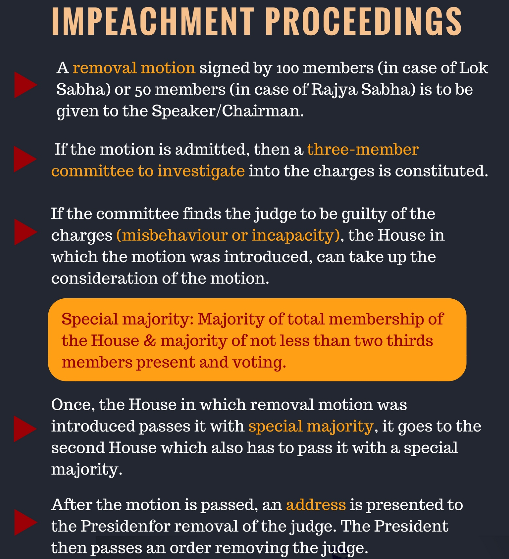Syllabus: GS2/ Polity and Governance
Context
- Justice Bhushan Ramkrishna Gavai was sworn in by President Droupadi Murmu as the 52nd Chief Justice of India.
Constitutional Provisions
- The Constitution of India does not mention any procedure for appointing the CJI.
- Article 124 (1) of the Constitution merely says, “There shall be a Supreme Court of India consisting of a Chief Justice of India.”
- Clause (2) of Article 124 of the Constitution says that every Judge of the Supreme Court shall be appointed by the President.
- Thus, in the absence of a constitutional provision, the procedure to appoint CJI relies on convention.
What is the Convention?
- The outgoing CJI recommends his successor a practice, which is strictly based on seniority.
- Seniority, however, is not defined by age, but by the number of years a judge has been serving in the top court of the country.
Eligibility
- Apart from being an Indian citizen, the person must;
- Have been for at least five years a Judge of a High Court or of two or more such Courts in succession or,
- Have been for at least ten years an advocate of a High Court or of two or more such Courts in succession, or
- Be, in the opinion of the President, a distinguished jurist.
Tenure and Retirement
- The Constitution does not fix a tenure for the Chief Justice.
- The retirement age for Supreme Court judges, including the CJI, is 65 years.
Removal of CJI
- The constitution provides that a judge can be removed only by an order of the president, based on a motion passed by both houses of parliament.
- The procedure for removal of judges is elaborated in the Judges Inquiry Act, 1968. The Act sets out the following steps for removal from office:

Source: TH